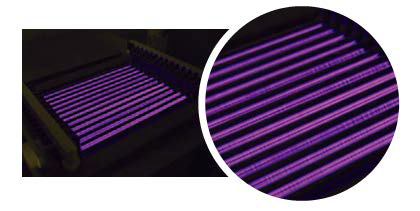
Purification Principle
Under the action of an external electric field, a large number of energetic electrons generated by the dielectric discharge, bombarded the pollutant molecules causing them to ionize, dissociate and excite, and then triggered a series of physical and chemical reactions to convert the large molecular pollutants into simple small molecules, or transform toxic and harmful substances into non-toxic and harmless or low-toxic and low-toxic substances, so that the odor of pollutants can be degraded and removed. Because the average energy of the electrons generated after ionization is between 1eV and 10eV, proper control of the reaction conditions can achieve a reaction that is difficult to achieve under normal circumstances or a slow reaction.

STEP I: High-energy electron bombardment
![]()
STEP-II: Generate oxygen atoms, ozone, hydroxyl radicals, and small molecule fragments
O2+2e→2O-
O2+O-→O3 + e
H2O+2e→H-+HO
H2O+O-+e→2HO-
H-+O2→HO-+O
C(a+b)H(n+n)O(x+y)+2e→ CaHmO-x+CbHnO-y
![]()
STEP III: Oxidation of molecular fragments
CaHmOx+HO-→CO2+H2O
CaHmOx+O-→CO2+H2O
CaHmOx+O2→CO2+H2O
CaHmOx+O3→CO2+H2O
After low-temperature plasma purification, the exhaust gas still contains some small-molecule substances and
ozone. The contact oxidation absorption process can be used to further process the pollutants and reduce the
ozone content in the exhaust gas. The relevant reaction mechanism is as follows:
H2O+e→H-+HO-+e
H-+O3→O2+HO-
HO-+O3→HO2-+O2
HO2-+O3→HO-+O2
Therefore, during this process, some small-molecule organic compounds can be further oxidized and removed
by hydroxyl radicals.
